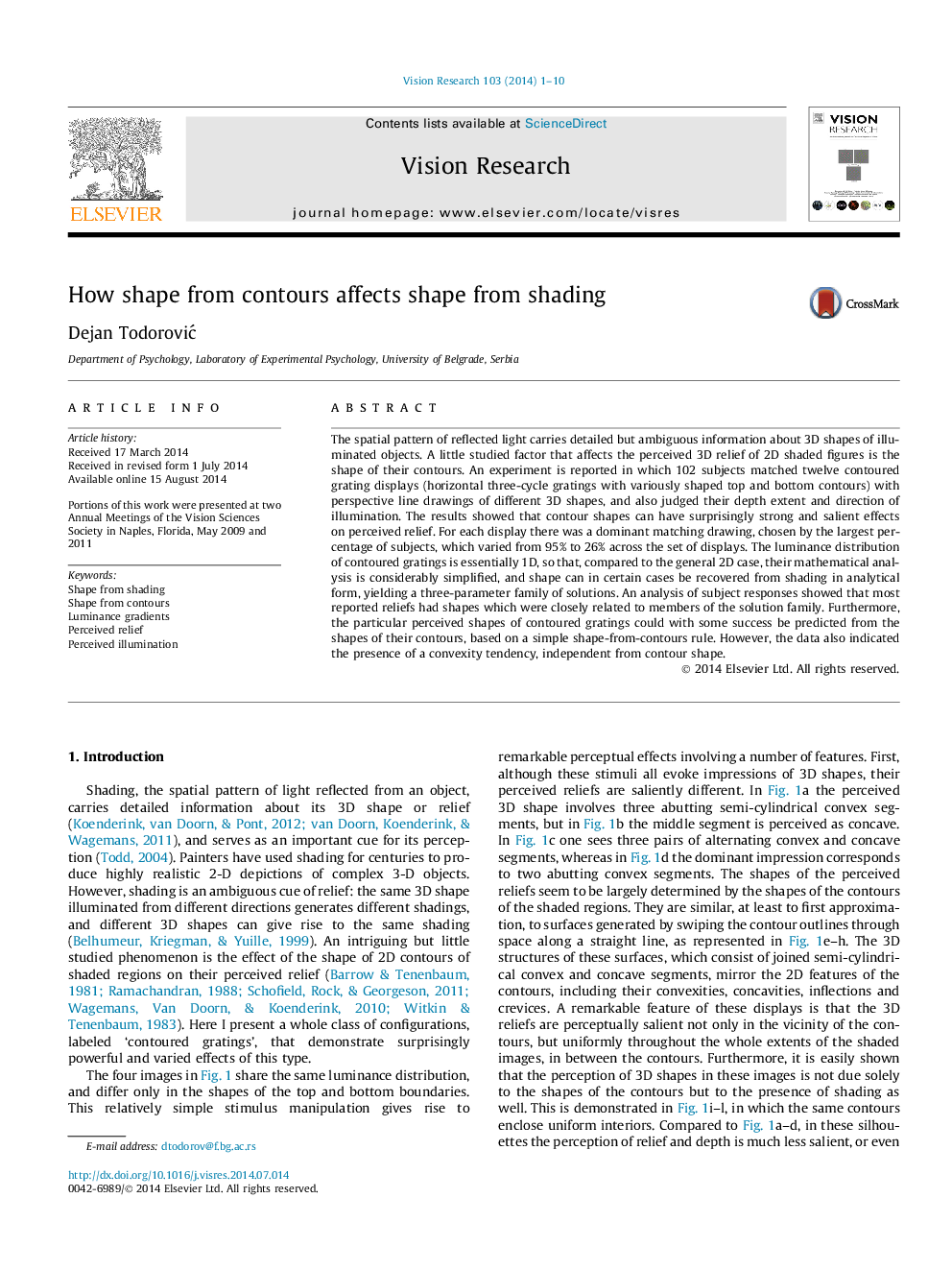| Article ID | Journal | Published Year | Pages | File Type |
|---|---|---|---|---|
| 6203391 | Vision Research | 2014 | 10 Pages |
â¢Shape of contours strongly affects perceived relief of identically shaded figures.â¢Shape can be analytically recovered from shading in these displays.â¢Solutions have three degrees of freedom, accounting for ambiguity of percepts.â¢A shape-from-contour rule and a default convexity rule account for most data.
The spatial pattern of reflected light carries detailed but ambiguous information about 3D shapes of illuminated objects. A little studied factor that affects the perceived 3D relief of 2D shaded figures is the shape of their contours. An experiment is reported in which 102 subjects matched twelve contoured grating displays (horizontal three-cycle gratings with variously shaped top and bottom contours) with perspective line drawings of different 3D shapes, and also judged their depth extent and direction of illumination. The results showed that contour shapes can have surprisingly strong and salient effects on perceived relief. For each display there was a dominant matching drawing, chosen by the largest percentage of subjects, which varied from 95% to 26% across the set of displays. The luminance distribution of contoured gratings is essentially 1D, so that, compared to the general 2D case, their mathematical analysis is considerably simplified, and shape can in certain cases be recovered from shading in analytical form, yielding a three-parameter family of solutions. An analysis of subject responses showed that most reported reliefs had shapes which were closely related to members of the solution family. Furthermore, the particular perceived shapes of contoured gratings could with some success be predicted from the shapes of their contours, based on a simple shape-from-contours rule. However, the data also indicated the presence of a convexity tendency, independent from contour shape.
Graphical abstractDownload high-res image (114KB)Download full-size image
